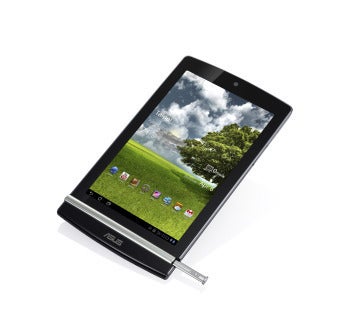Are Android tablets poised to fall in price, again? That’s what it sounds like based on comments by Nvidia vice president Rob Csonger. In a call with investors, Csonger discussed the existence of a reference design for a $199 Android tablet running the company’s Tegra 3 processor. What’s noteworthy here is that, in the five months since Nvidia took the stage at its CES 2012 press conference, the company has lowered the target price of its inexpensive tablet platform from $249 to $199.
That 20 percent price decrease reflects the ongoing price pressures in the non-Apple tablet market, where the Amazon Kindle Fire dominates among 7-inch models, and Samsung’s Galaxy Tab 2 7.0 dropped in price by 38 percent compared with last fall’s model. However, neither of those models are performance barn burners, and neither features a quad-core processor with the potential power of Nvidia’s Tegra 3 platform.
The idea of an inexpensive 7-inch tablet running Tegra 3 was introduced at Nvidia’s event, when Asus joined Nvidia on stage to show off and discuss Asus’s MeMo 370T. At the time, the MeMo 370T was said to be arriving in the summer of 2012. When asked, Asus could not confirm whether that timeline was still in place, nor could the company confirm what markets would get the MeMo 370T.
That model had looked very enticing in its demos. Inside the version shown at CES, the tablet had a 1.2GHz quad-core Tegra 3 processor and 1GB of memory, and started with 16GB of storage. Those specs are significantly better than the specs of Amazon’s Kindle Fire, which launched in November 2011 at an attractive $199 but made significant performance and spec compromises to achieve that wallet-friendly price.
Beyond the Tegra 3 processor, what surprised about the MeMo 370T’s specs was that Asus planned to give it a WXGA, 1280-by-800-resolution display, which provides a noticeably higher pixel density than the vast majority of 1024-by-600-pixel 7-inch tablets available today. Even now, some five months later, we continue to hear tablet makers say that the higher-resolution display still carries a high enough component cost that they’re staying away from migrating to the better display just yet. Apple’s third-generation iPad is currently the only 10-inch-class tablet on the market with a high-res display; Acer and Asus both showed models earlier in the year, but neither is shipping as yet.
The Kai platform Csongas mentioned was short on specs and detail. Nvidia did confirm directly, though, that Kai uses the “4-Plus-1” quad-core Tegra 3 platform, as well as Nvidia’s PRISM display technology that reduces backlight power and enhances pixel color to extend battery life, plus Nvidia’s DirectTouch technology for increased touch responsiveness and decreased power consumption. While Csongas also mentioned that the Tegra 3 platform allowed for a tablet to be developed at a much lower cost, he did not specify how the platform will enable tablet manufacturers to use lower-cost components inside. We’ve asked this of Nvidia, but the company declined to clarify what Csongas meant by this comment.
Also unclear is whether the Kai platform is targeted solely at Android 4.0 Ice Cream Sandwich tablets, or whether it will also work for Windows RT tablets. Windows RT is the version of Microsoft’s upcoming Windows 8 operating system that will work on ARM processors. Nvidia has repeatedly discussed its commitment to Windows tablets, and the opportunity it sees for Windows on ARM. If the $199 Kai platform targets Windows RT as well, that could give ARM-based Windows tablets a significant price advantage over Intel-powered Windows tablets. (Not that we’ve heard a peep, yet, about how much Intel-based Windows 8 tablets might cost when they become available, presumably later this year.)
As enticing as all of this is, reference designs alone shouldn’t be big news. A bigger question is when this product will become a reality that’s ready for mass-market manufacture and a store shelf near you. According to an Nvidia spokesperson, “customers are using the Kai platform to build Tegra 3 tablets now.” One has to wonder if, by connecting the dots, the as-yet unannounced MeMo 370T is one of those models.
Beyond the Apple iPad, the actual, shipping tablets we’ve seen in the first half of 2012 have underwhelmed. News like this--along with the previously announced but not yet shipping models--indicates that the back half of the year should be much more promising.


No comments:
Post a Comment